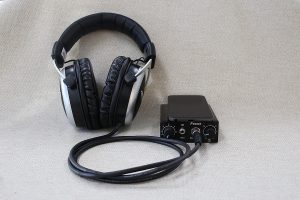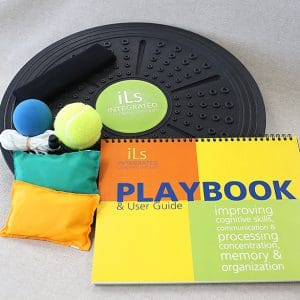We figured that she would have to be in therapy for a while and that she maybe wouldn’t even be in mainstream school. But she’s doing great! Nobody even knows that she’s autistic, except her teacher. – Lisa McDonough, PhD, Maggie’s Mother
Symptoms
Maggie was referred to therapy by her pediatrician after her diagnosis of autism with the following areas of concern: poor language skills, fine and gross motor skill delays, delayed self-care skills, visual perceptual deficits, sensory integration dysfunction, auditory processing weaknesses, echolalia and oral dysphagia.
At time of the initial evaluation, Maggie was almost 3-years-old, and presented severe deficits with social-emotional engagement, accepting communication attempts by others and closing circles of communication.
Socially and emotionally, Maggie was easily overwhelmed and frustrated by daily activities; she did not transition smoothly from one activity to another, and lacked confidence with new environments. She also lacked independence and had low self-esteem. She had poor short-term memory, could not sequence tasks, and often failed to begin or complete tasks unless assistance was provided. Maggie had difficulty finding clothes and getting dressed in the morning and preferred to avoid planning due to difficulty with tasks.
The Results

View ways you can train with iLs.
Letter reversals and mild weaknesses in core strength have been reported and will continue to be monitored. However, Maggie has progressed from being a child with severely impaired communication and social skills to functioning at a typical peer level.
The therapists and parents concur that the iLs program was key in:
- accelerating progress,
- promoting self-confidence,
- addressing auditory processing weaknesses more efficiently and effectively,
- promoting increased body awareness,
- and facilitating improvements in pragmatic language skills.
During the initial screening, the client was able to identify filtered words with 23% accuracy. At end of the intensive ILS program, she scored within normal limits (80% accuracy or greater) on all filtered frequencies excluding 1000 Hz.
Auditory Figure Ground tasks were completed with 75% accuracy prior to the second phase of ILS. At the end of the intensive ILS program, the client completed Auditory Figure Ground tasks with 89% accuracy.
Dichotic Listening tasks were completed with 39% accuracy prior to the second phase of ILS. At the end of the ILS program, the client was able to complete Dichotic Listening tasks with 67% accuracy. Although weaknesses continued to be present, she also evidenced gains regarding attention to the task.
Auditory Memory tasks were completed with 66% accuracy (i.e. recalling three unrelated words in a series) prior to the second phase of ILS. At the end of the ILS program, the client was able to recall a series of three unrelated words with 91% accuracy. Weaknesses were present with recalling four unrelated words in a series (22% accuracy). However, she demonstrated increased independence with utilizing compensatory strategies (i.e. asking for repetitions).
Regarding frustration during interactions, initiations, engagement, pretend play, and reciprocal eye gaze: all parameters are within a normal range post ILS. Echolalia has completely resolved with language content now being purposeful and meaningful!
Intervention
iLs Focus Sensory-Motor program sessions 1-60 were used at a frequency of three sessions per week for a period of five months.

- 2 sessions per week were conducted in the clinic and were paired with Occupational and Physical Therapy
- The 3rd session each week was conducted in the home environment by Maggie’s mother utilizing the PlayBook activities and a home program developed by Maggie’s Occupational and Physical Therapists.
- Beginning with Session 52 of the Sensory-Motor protocol, Speech-Language Therapy was introduced. Thirty minutes of the sessions focused on utilizing the iLs Expressive Language Kit.
Supporting Research
In 2012 an independent, non-profit research group conducted a survey with therapists who had used iLs with over 1300 children on the autism spectrum in order to determine areas of efficacy. The complete study is below and the full survey may be found on the Research page.
Outcome measure & Perceived Frequency of improvements
| Never | Rarely | Sometimes | Often | Always | Often + Always | |
|---|---|---|---|---|---|---|
| Motor Coordination | 10% | 40% | 47% | 87% | ||
| Self-Regulation | 10% | 46% | 41% | 87% | ||
| Sensory Int/Processing | 7% | 40% | 50% | 90% | ||
| Arousal | 13% | 53% | 28% | 81% | ||
| Attention | 13% | 54% | 33% | 87% | ||
| Transitions | 1% | 10% | 61% | 24% | 85% | |
| Following Verbal Directions | 14% | 47% | 37% | 84% |
Learn More
iLs works with thousands of therapists and children to address issues related to sensory, attention, and learning difficulties. Questions? Call us!
As a truly multi-sensory program, iLs integrates sound with movement and includes fun activities and exercises that can be done in the clinic, classroom and/or at home. Each session is spent doing creative and/or relaxing activities such as drawing, puzzles, fine-motor games, or just relaxing in a comfortable chair while listening to specially-treated music.



 © 2025 Unyte Health US Inc.
© 2025 Unyte Health US Inc.